I use a fertility tracker for birth control—and I love it
This fertility monitor replaced the pill for me, and my life changed drastically.
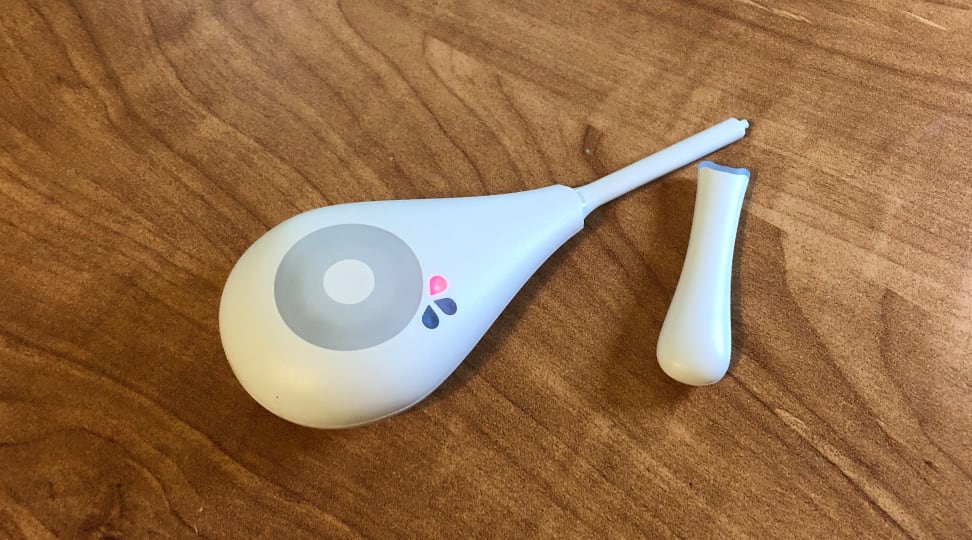 Credit:
Reviewed / Sarah Kovac
Credit:
Reviewed / Sarah Kovac
Products are chosen independently by our editors. Purchases made through our links may earn us a commission.
Goat bladders. Lysol. Crocodile dung. Weasel testicles. What do these have in common? They were all used as birth control at different points in history.
We've come a long way from those bizarre techniques, but even now there's no shortage of misinformation out there on the topic of fertility.
Some of today's birth control methods are certainly more effective than others, and many of us wouldn’t even be here if it weren’t for the failure rate of the formerly popular rhythm method (which is why simple period tracking apps are no substitute for actual birth control). Luckily, science and modern medicine have come a long way in helping us understand when we’re fertile, when we’re not, and how to use that information.
How do people avoid pregnancy naturally?
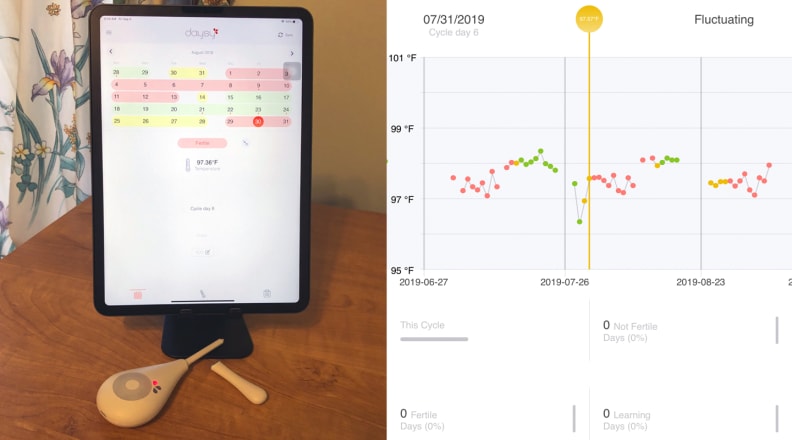
DaysyView collects tons of cycle data, and you can even see your temperature charts.
I've always tended toward natural and holistic medicine, so not long after I was married, I began researching natural methods of contraception. A few months after I began trying to chart my cycles (noting all fertility signs on one paper chart per cycle to find evidence of ovulation), we were (not unpleasantly) surprised to find we'd soon be parents. I chalked my natural birth control failure up to user error, but I didn't want to risk failing again.
After the birth of our pleasant surprise, I tried multiple forms of birth control: the pill, the mini-pill, the ring, the patch, and the IUD. They were all effective, but I came to the conclusion that hormonal birth control really does a number on my emotions, and I wasn’t into it (nor were the people around me).
Natural methods of birth control greatly rely on the user’s ability to collect accurate data. Basal body temperature (BBT), can only be measured immediately after waking, at about the same time every day, after four hours of continuous sleep, and without the influence of illness or alcohol. Getting four hours of consecutive sleep and waking around the same time every day can be a tall order, especially for parents of young children.
Another data point that’s difficult to record accurately is the amount and consistency of cervical fluid. It’s a great indicator of the day's fertility, but it’s a pretty subjective measurement, and a little awkward to decipher.
Even more awkward is the measuring of one’s cervical position and firmness.
Can technology help?

The only information Daysy needs is your daily temperature and your menstruation dates. Both are entered via a single button on the thermometer base.
Temperature, cervical fluid, and cervical position are the main indicators of fertility used in the fertility awareness method (FAM) outlined in the gold-standard book Taking Charge of Your Fertility. It’s a fair amount of work to learn the method, but its users swear by it. I followed this method successfully for a while, but struggled to get accurate BBT readings, as I rarely get four hours of sleep in a row or wake at the same time.
When looking for a better way, I ran across a fertility monitor that offered a solution: the Daysy fertility monitor.
Daysy is a fertility tracker that uses past cycles and basal body temperature to help users both achieve and avoid pregnancy. I also toyed with the idea of using the FDA-approved app Natural Cycles in conjunction with an amazing wearable thermometer called Tempdrop, which would help me get accurate temperature measurements. Natural Cycles has gotten a bad rap, but it turns out that its typical use effectiveness is on par with birth control pills. Frightened by the negative headlines about Natural Cycles, I opted for Daysy and couldn’t wait to be done with hormonal birth control.
Now, I use both Daysy and Natural Cycles—again because I'm a huge nerd. Though I’m not someone who is overly concerned about privacy, I decided to double-check how Daysy handles my personal info in the advent of the Roe v Wade overturn. The company states on their website that they don’t store any personal data without explicit personal consent from users like myself, and it can’t be accessed by the government or any other entity unless they are able to provide your device’s serial number, which is only found on the physical product itself. Daysy doesn't even have this number unless you provided it during the signup process. They also store data about your cycle on secure servers that adhere to super-strict EU data privacy laws, which also give users the right to request that their app data be deleted at any time upon request. If you’re still concerned that your data will end up in the wrong hands, you have the option to use Daysy for the temperature function only, without being connected to the app.
Natural Cycles also adheres to the same privacy laws according to their FAQ, but I reached out to Daysy to provide additional reassurance for fellow period-trackers in light of recent events. “We have always taken the privacy and security of user data very seriously, and the protection of user data has been, and remains, a primary focus when designing our products,” said a PR rep via e-mail. “We do not share your data with third parties or third-party libraries, such as Google Analytics or Facebook, to sell you other products based on what you track.”
I found it comforting that I wasn’t going to receive unwanted marketing, and was comforted that they ask before sharing data with researchers in the name of women’s health. “Only after permission is granted by the user, is the data completely de-identified before the scientific researchers we work with have access,” said a PR rep for the company. “This means no dataset can be linked to an individual person.”
How does Daysy work?
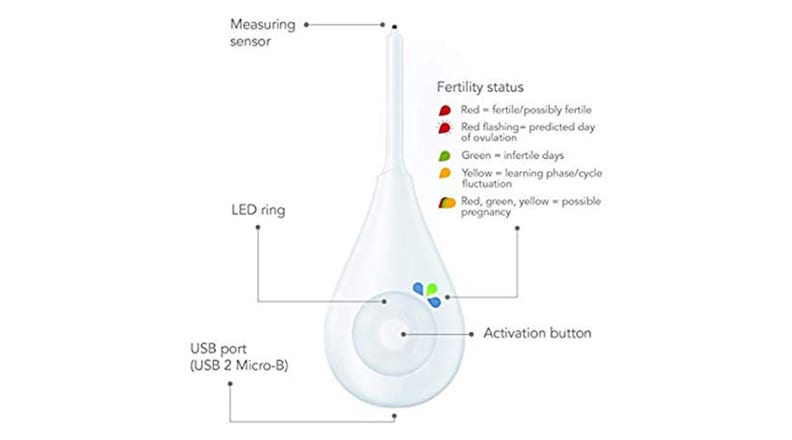
Daysy fits a lot of function into a sleek, intuitive design.
Daysy’s algorithm promises to adjust how it interprets your temperature if you take it at different times from day to day. I take my temperature with Daysy first thing when I wake, no matter what time it is. Daysy then does all the work of interpreting that information in conjunction with data from my past cycles and period dates to tell me when I’m fertile and when I’m not. I can record when my period starts via a button on the thermometer, and I can see all kinds of data about my cycles if I choose to sync Daysy with the accompanying app (optional, as fertility status displays on the thermometer itself).
Even more convenient was the partner app, which allowed a partner to log in and see whether you’re fertile or not, but the partner was restricted from altering data—both parties knew whether protection/abstinence was needed that day. No conversation necessary, no excuse for miscommunication. The app was updated with the release of the second-generation Daysy in March 2019, but we're still waiting for the new partner app, which is tentatively scheduled to be released in mid-October. While we wait, I simply synced my Daysy with the DaysyView app on my husband's phone and told him not to mess with the data. Now he sees what I see, and once again we're on the same page.
How effective is the Daysy fertility monitor?
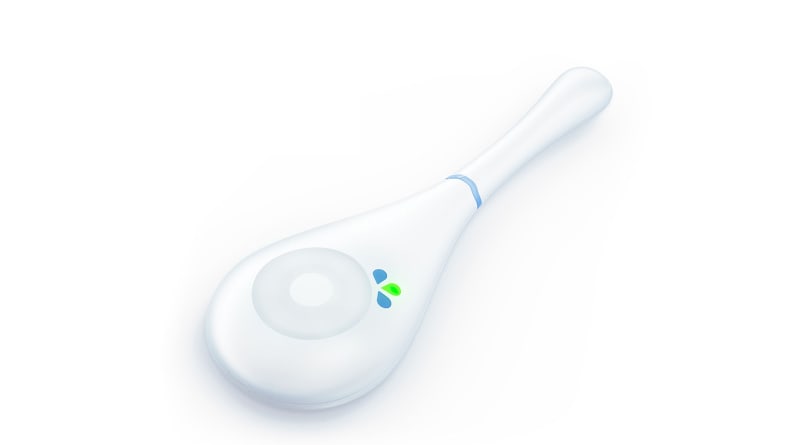
Daysy charges via a mini usb cable and syncs with a smartphone via Bluetooth.
Fertility begins several days before ovulation, as sperm can live in the uterus for up to five days waiting to pounce on an egg when it's released. So, while finding a temperature spike is a decent measure of fertility after ovulation (which generally occurs somewhere in the middle of the cycle, between periods, and is accompanied by a sustained rise in BBT), but it's not helpful before ovulation, especially if you have irregular cycles, are postpartum, or are peri-menopausal.
To find your fertile days leading up to ovulation, Daysy relies on information from your past cycles and adds in a few buffer days to be cautious. It's not a perfect method, but, to be fair, every birth control method except abstinence has a failure rate. The pill? Nine percent. Male condom? Eighteen percent.
In the past, Daysy's manufacturer, Valley Electronics, has claimed the tracker to calculate fertility with 99.4% accuracy, which would put its effectiveness slightly lower than the pill and far better than other non-hormonal methods. But this number was based on a research that was retracted in early 2019 after the journal's publisher cited "fundamental flaws in the methodology" of the study over concerns of selection bias and whether users accurately reported pregnancies as intentional.
To be quite honest, if it were medically necessary for me to avoid pregnancy, that would probably be enough to scare me into a hormonal method.
Does Daysy work for me?
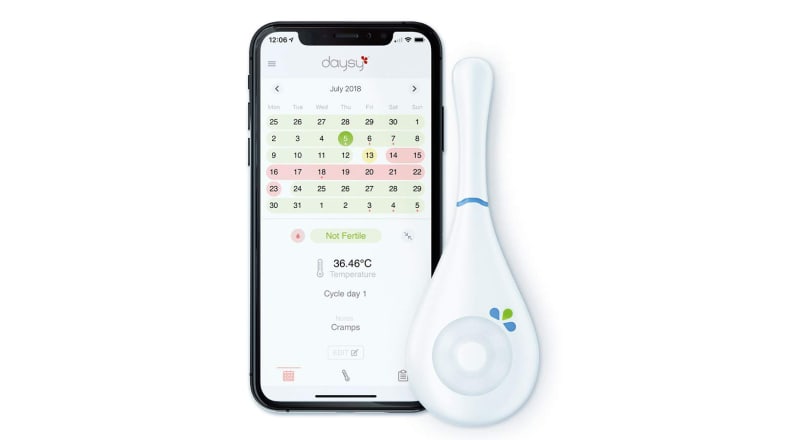
The accompanying DaysyView app can give users lots of information about their cycle, but Daysy can be used without it.
After using Daysy for several years alongside my own charts (just for fun, because I'm nerdy enough to find chart-making fun), I’ve never had so much as a "scare." Plus, seeing how its calculations always align with my own, I feel confident enough to keep using it.
I’ve had great results relying on Daysy for both contraception and achieving two pregnancies. It takes about 30 seconds of my day and I am happy knowing I’m not messing with my hormones.
How a person manages their fertility is an intensely personal matter, so what works for me won’t necessarily work for you. But after about five years of using my Daysy, I couldn’t be happier with it. It’s easy to use, it doesn’t turn me into a jerk, and it works. That’s really all I want from a birth control method, and, so far, Daysy delivers.
Correction: This article has been updated to reflect that Daysy has not received FDA approval.


